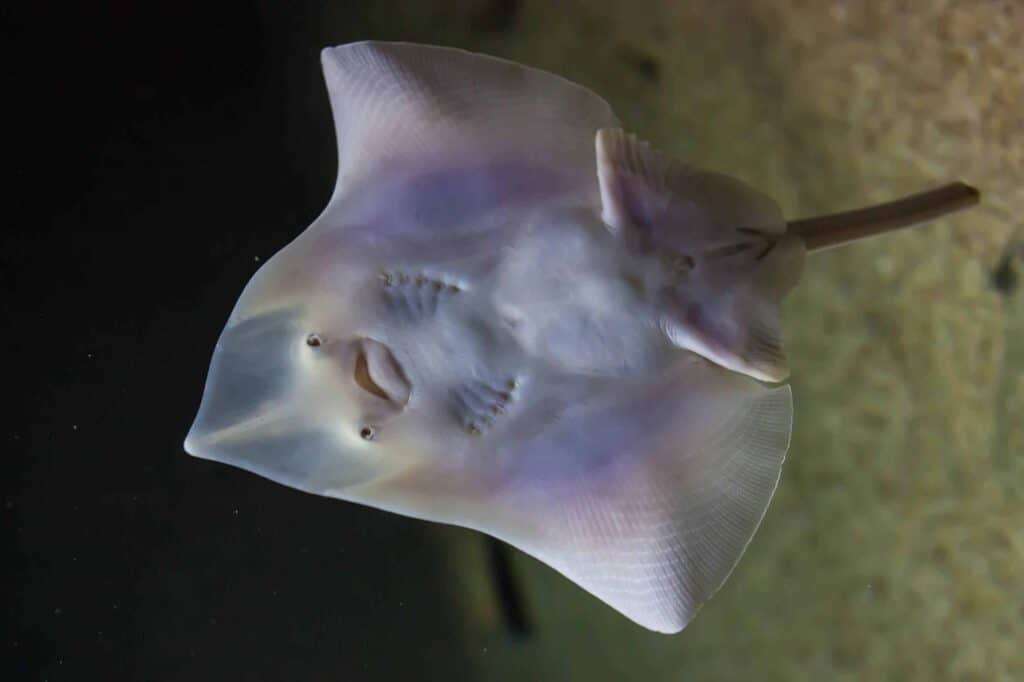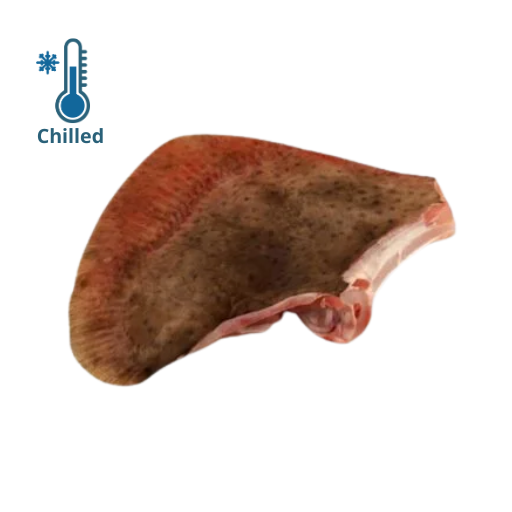
When you picture a typical fish, you likely imagine a streamlined, torpedo-shaped body with fins on the top and bottom. However, there is an entire group of marine creatures that defy this conventional fish form – the skates. Also known as rays, skate fish are a fascinating and diverse order of cartilaginous fish that have adapted to thrive in the world’s oceans.
The Distinctive Skate Physiology
Skates belong to the order Rajiformes and are closely related to sharks, sharing many anatomical features. However, the most striking difference is the skate’s unique body shape. Rather than the typical elongated fish form, skates have a wide, flat, diamond-shaped body with large, wing-like pectoral fins that extend out from the sides. This distinctive flat profile allows them to rest directly on the seafloor, blending in with their environment.

Another key physical trait of skates is the absence of a dorsal fin on their backs. Instead, they have a long, slender tail, which may or may not have a venomous spine. This tail is used for steering and propulsion, as skates swim by undulating their wing-like pectoral fins rather than using a caudal (tail) fin like most bony fishes.
Skates also lack the teeth found in sharks and other fish predators. Instead, they have specialized plates or crushing teeth that they use to feed on hard-shelled prey like crustaceans, mollusks, and small bony fish that they uncover from the seafloor.
Diversity and Distribution of Skate Species
Marine environments across the globe host over 200 known species of skates, which range greatly in size. The smallest skate species, such as the short-nose skate, measure only around a foot wide, while the largest, the giant oceanic manta ray, can reach over 20 feet across. However, most skate species fall somewhere in the 2-6 foot range.
Skates inhabit a variety of ocean habitats, from shallow coastal waters to the deep, open ocean. Some species prefer tropical waters, while others thrive in temperate or even subarctic regions. Certain skate species have adapted to live on or near the seafloor, while others are more pelagic, swimming in the middle or upper levels of the water column.
This incredible diversity of skate species has allowed them to fill a wide range of ecological niches, serving as both predators and prey within marine food webs. Skates play crucial roles in controlling populations of their prey species, while also providing sustenance for larger predators like sharks, marine mammals, and
Share
Culinary Considerations for Skate Fish
In addition to their important ecological roles, skate fish have also long been a part of human culinary traditions in many coastal regions. Humans commonly eat the wing-like pectoral fins of skates, with the meat often described as having a texture and flavor similar to scallops or lobster.
In parts of Europe, skate wing is a particularly popular menu item, where humans commonly bread and fry it or sauté and serve it with sauces. In the United States, skate wing has gained more popularity in recent years as an alternative seafood option, though humans still consume it less commonly compared to more mainstream fish like cod or salmon.

When preparing skate, it is important for humans to properly handle and clean the fish, as their long tails do contain venomous spines that can deliver a painful sting if not removed. Additionally, some skate species may accumulate high levels of certain toxins, so it is crucial for humans to source skate from reputable, sustainable suppliers.

Seafood Society is dedicated to offering top-notch seafood of superior quality. Our outstanding reputation is a result of our commitment to delivering the freshest seafood in the quickest possible time, while ensuring complete traceability from the moment it is sourced from the boat until it reaches your plate.
Our skate wing is from France and is sustainably sourced. Discover our skate wing on Seafood Society






 No products in the cart.
No products in the cart. 
